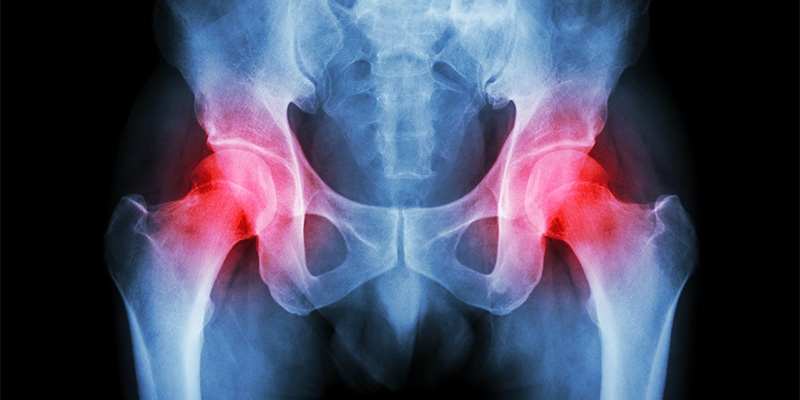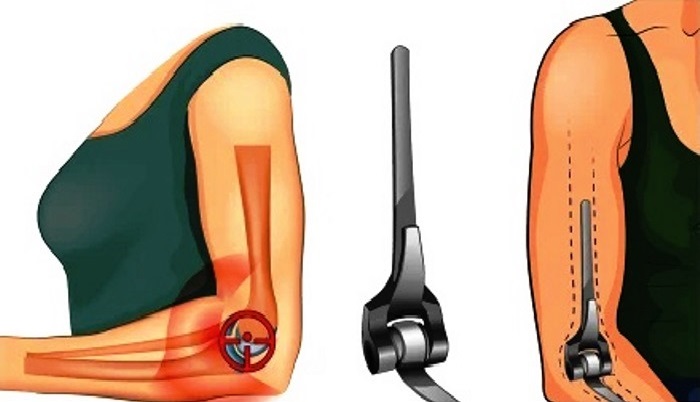Learn About Sleeping Position After Hip Replacement Surgery and Success Rates
How to Sleep After Hip Replacement Surgery In this article, we will take a deep look at the best methods and guidelines for sleeping after hip replacement surgery, and discuss the most comfortable and safe positions that the patient can adopt during sleep, as well as the tools and aids that can be used to achieve comfortable and appropriate sleep.

How to Sleep After Hip Replacement Surgery
After undergoing hip replacement surgery, finding a comfortable and safe sleeping position is essential to facilitate the healing process and reduce the risk of any complications. In general, patients are advised to avoid sleeping positions that put direct pressure on the treated hip or expose it to excessive twisting or bending, in order to maintain the stability of the joint and promote optimal healing.
If side sleeping is your preference, it is important to ensure that a pillow is placed between the knees to maintain the hips and knees in a neutral position and prevent the treated hip from moving inward, which ensures that the new joint is not strained. Patients should avoid sleeping directly on the treated side immediately after the surgery until the doctor allows it.
It is also important to avoid sleeping on the stomach, as this position can put additional pressure on the hip and impede healing. In addition, excessive bending of the treated hip or crossing the legs during sleep should be avoided to prevent excessive pressure on the joint.
Using additional pillows to support the body and maintain spinal alignment can be helpful in providing comfort and support during sleep. Adhering to the doctor’s instructions and physical therapy recommendations after the surgery is essential to ensure proper healing and recovery.
Regain your strength and freedom of movement with the expert placement of the hip joint, Dr. Amr Amal, where advanced technology meets exceptional care to ensure the best results.
What is a hip replacement surgery?
Hip replacement surgery, also known as total hip arthroplasty, is a surgical procedure in which the damaged or diseased hip joint is replaced with an artificial joint. This type of surgery is a treatment option for individuals who suffer from severe pain and restricted mobility due to hip joint degeneration.
The goal of hip replacement surgery is to alleviate pain, improve hip function, and enhance the patient’s ability to perform daily activities with greater ease and without limitations. The surgery involves removing the damaged portion of the hip joint, including the femoral head and the acetabulum, and replacing them with artificial components.
With Dr. Amr Amal, your steps towards a pain-free future begin with hip replacement, an innovative technique for a more active and free life.

Hip Replacement Success Rate
Hip replacement surgery is considered one of the most successful and effective surgical procedures in modern medicine, as it provides significant pain relief, noticeable improvement in the quality of life, and an increase in the range of motion for many patients who suffer from severe hip joint damage.
The success rate of hip replacement surgery usually ranges between 90% to 95%, making it one of the most performed and successful surgeries globally. The long-term success of hip replacement surgery depends on several factors, including the patient’s general health, activity level, adherence to the rehabilitation program, and the accuracy of the surgical procedure itself.
Most patients notice a significant improvement in their ability to perform daily activities without pain after the surgery, and the pain associated with arthritis is effectively eliminated in most cases.
However, like any surgical procedure, hip replacement surgery carries certain risks, such as the risk of infection, blood clots, wear or loosening of the implant over time, and in rare cases, the risk of fracture during or after the surgery. Nevertheless, by choosing an experienced surgeon and carefully following the medical advice and physical therapy recommendations after the surgery, these risks can be minimized.
Dr. Amr Amal provides the optimal solution for hip pain by installing an artificial joint, a reliable strategy that restores your ability to enjoy your life without limitations.
Cost of Hip Replacement Surgery
The cost of hip replacement surgery in Egypt is influenced by various factors, including the surgeon’s experience and expertise, the quality of the hospital or medical center where the surgery is performed, the type of artificial joint used, and the medical services required before and after the surgery, such as medical examinations, physical therapy, and length of hospital stay.
In general, the cost of this procedure in Egypt ranges across different amounts, and may be relatively lower compared to European and American countries due to differences in the economic system and healthcare costs. However, it is important to emphasize that the choice of surgeon and medical center should not be based on cost alone, but should also consider quality, safety, and the success rate of the procedures performed by the surgeon and the hospital.

Risks of Hip Replacement Surgery
Hip replacement surgery is one of the major surgeries that aim to improve the quality of life for people who suffer from severe pain and restricted mobility due to joint damage. However, like any surgical procedure, hip replacement surgery carries a set of potential risks and complications that patients should be aware of before deciding to undergo the surgery.
Post-operative Risks:
- Infection: Despite strict preventive measures, there is a risk of infection at the surgical site or even within the new joint.
- Blood clots: Blood clots are common risks after major surgeries, especially in the legs, and can be serious if these clots travel to the lungs or other parts of the body.
- Bleeding: Bleeding can occur as a complication of any surgery and may require blood transfusion in some cases.
- Nerve or blood vessel damage: Although rare, there is a possibility of damage to the nerves or blood vessels around the hip joint during the surgery.
- Prosthesis dislocation: The artificial joint can become dislocated or move from its original position, which may require additional surgery.
- Leg length discrepancy: In some cases, the surgery may result in a slight difference in leg length, which may require the use of orthopedic shoes or additional corrective procedures.
- Osteoarthritis: There is a long-term risk of developing osteoarthritis in the artificial joint, which may lead to a deterioration of its function.
Choose Dr. Amr Amal to install a hip joint and prepare to embark on life’s adventures again with confidence, thanks to the latest surgical techniques and specialized care.
What are the stages of recovery after a hip replacement surgery?
The stages of recovery after a hip replacement surgery involve several important steps, and the time it takes for each patient to heal varies based on multiple factors, such as overall health status, patient age, and activity level before the surgery. Despite these differences, the healing process can be divided into the following main stages:
- Initial Stage (First Weeks after Surgery)
- Early Recovery: Recovery begins immediately after the surgery, with a focus on wound healing, pain and swelling reduction, and prevention of complications such as blood clots.
- Mobility Initiation: Patients are encouraged to start moving and walking with the assistance of devices such as walkers or crutches to prevent joint stiffness and strengthen the muscles.
- Early Rehabilitation Stage (Second to Sixth Week)
- Physical Therapy: A specialized physical therapy program begins to enhance strength and improve the range of motion in the hip joint.
- Gradual Activity Increase: Patients are encouraged to gradually increase their activity level, while maintaining the limits recommended by the doctor to avoid excessive stress on the new joint.
- Intermediate Rehabilitation Stage (Sixth Week to Third Month)
- Improved Mobility and Strength: Continued work to improve muscle strength and joint flexibility through targeted exercises.
- Increase in Daily Activities: Patients can gradually return to their normal daily activities, with caution and following the doctor’s guidance.
- Advanced Recovery Stage (Third Month to Sixth Month)
- Return to Normal Activity: Most patients can return to most of their normal activities, including driving and work, based on their individual progress and the nature of their work.
- Improved Flexibility and Strength: The focus continues on improving the functional performance of the hip joint and increasing muscle strength to support more strenuous activities.
- Long-term Follow-up
- Ongoing Monitoring: Regular follow-up visits with the doctor are recommended to monitor the condition of the artificial joint and ensure its continued proper function.
- Maintaining a Healthy Lifestyle: Patients are encouraged to maintain an active and healthy lifestyle to support the long-term health of the joint.
Each stage of the healing process requires patience and adherence to medical guidance and physical therapy recommendations to ensure the best possible outcomes and minimize the risk of complications.

How long does pain last after a hip replacement surgery?
The duration of pain after a hip replacement surgery varies from person to person and depends on several factors, including the patient’s general health condition, the type of surgery performed, the level of physical activity, and the patient’s adherence to the rehabilitation program. Typically, patients experience significant pain in the first days and weeks following the surgery.
In the initial weeks after the surgery, pain and swelling are considered normal and part of the healing process. Pain is usually managed with the prescription of pain medications and anti-inflammatory drugs by the doctor, in addition to the use of ice and rest techniques.
Some patients may experience a temporary increase in pain due to movement and pressure on the new joint, and this is a natural part of the recovery process, which should decrease as the strength and flexibility of the hip improve over time. For most patients, the pain starts to improve significantly within 3 to 6 weeks after the surgery, and the improvement continues over the following months.
Don’t let hip pain stop you, Dr. Amr Amal provides a revolutionary treatment by installing an artificial joint, giving you the strength to live your life to the fullest without pain.
When can you walk after a hip replacement?
After a hip replacement surgery, patients are encouraged to start walking and using the treated leg very early on, often within the first day or two after the surgery, under the supervision of the medical team. This early approach aims to promote recovery by improving blood circulation, preventing blood clots, and accelerating the healing process.
Of course, the ability to walk independently and the duration required to do so varies from one patient to another, based on factors such as age, general health condition, activity level before the surgery, and the degree of adherence to the rehabilitation program.
Initially, patients may need to use assistive devices such as walkers or crutches to help distribute their weight and provide support during walking. During this period, it is important to follow the medical team’s guidance on how to walk in a way that protects the new joint and avoids excessive pressure on it.
Typically, the reliance on walking aids is gradually reduced as part of the rehabilitation process, and many patients are able to walk independently without assistance within 4 to 6 weeks after the surgery.
However, it may take several months for some patients to feel completely comfortable and confident in walking long distances or engaging in more demanding activities. It is important to emphasize that the recovery after a hip replacement surgery is a gradual process that requires patience and adherence to medical guidance.

What happens after a hip replacement surgery?
After a hip replacement surgery, patients embark on a recovery journey that requires patience and adherence to the medical team’s guidance to ensure the best possible outcomes. This journey begins immediately after the surgery, with a focus on wound healing, pain management, and prevention of complications such as blood clots.
- Initial Recovery Stage: In the first weeks following the surgery, a treatment plan is put in place that includes physical therapy to strengthen the muscles around the hip and improve the range of motion.
- The Intermediate and Advanced Recovery Stage: During the following months, patients continue to progress with their exercises and gradually return to their normal activities. Focus is placed on improving walking ability, climbing stairs, and engaging in activities that require more hip movement. The goal is to regain independence and improve quality of life.
- Medical Follow-Up: Post-operation involves regular follow-ups with the surgeon to assess wound healing, artificial joint function, overall recovery progress. Additional evaluations, such as X-rays, may be conducted to ensure the artificial joint is in its correct position and functioning properly.
- Life After Recovery: Once the initial recovery stage is surpassed, most patients can return to most of their previous activities with little or no restrictions. However, avoiding high-impact activities that exert significant pressure on the artificial joint is advised to prolong its lifespan.
Adhering to any specific recommendations from the doctor and continuing a program to maintain hip health and strengthen surrounding muscles are important to ensure the longest possible lifespan of the artificial joint and reduce the risk of complications in the future.
Is Hip Replacement Surgery Dangerous?
While this procedure is highly safe and effective, it can be risky in some cases. The surgery is an option for patients experiencing severe hip joint pain that cannot be alleviated through other means such as medication or physical therapy. Some potential side effects and complications of hip replacement surgery may include:
- Blood Clotting: Blood clots may form in deep blood vessels after surgery, which can be serious if not identified and treated promptly.
- Infection: Infections in the replaced joint may occur, requiring immediate treatment with antibiotics or another surgical procedure.
- Implant Fracture: Wear or fracture of the artificial joint may occur, necessitating additional surgery for repair.
- Instability or Malalignment: Problems with the stability of the new joint or improper fitting of the parts may arise.
- Loss or Reduction of Movement: Excessive or insufficient reduction in joint movement, especially if complications occur during surgery.
Despite these potential risks, the effectiveness of hip replacement surgery in alleviating pain and improving movement can be highly beneficial for patients with severe and chronic hip joint problems. Patients should discuss the risks and potential benefits with their medical team before deciding to undergo the procedure.

Best Doctor for Hip Replacement Surgery
When searching for the best doctor for hip replacement surgery, Amr Amal is one of the distinguished and excellent surgeons in the field of joint and bone surgery. Dr. Amr Amal has a good reputation and extensive experience in this field, making him a preferred choice for many patients.
Dr. Amr Amal is skilled and experienced in performing hip replacement surgeries, relying on the latest techniques and surgical procedures to ensure the best outcomes for patients. Additionally, Dr. Amr Amal has a unique ability to communicate with patients, providing the necessary support and assistance throughout all stages of treatment.
By delivering medical services with excellence and a high level of professionalism, Dr. Amr Amal earns the trust and respect of patients, who consider him a reliable and recommended choice for hip replacement surgeries.
Overall, Dr. Amr Amal represents excellence in the field of joint and bone surgery, making him an excellent choice for patients seeking the best medical services, highest levels of care, and specialized treatment for hip joint problems.


















